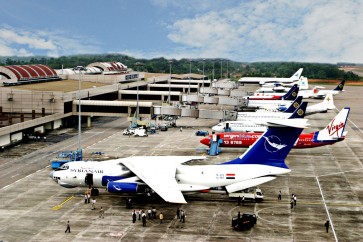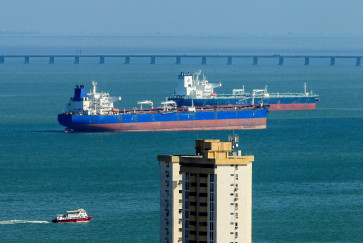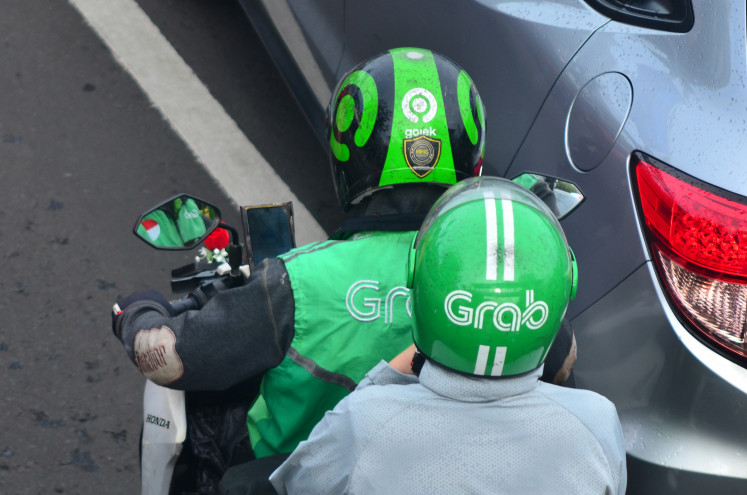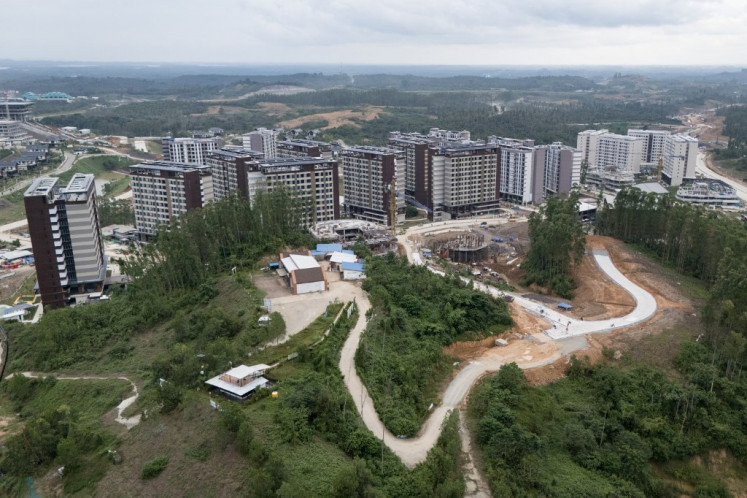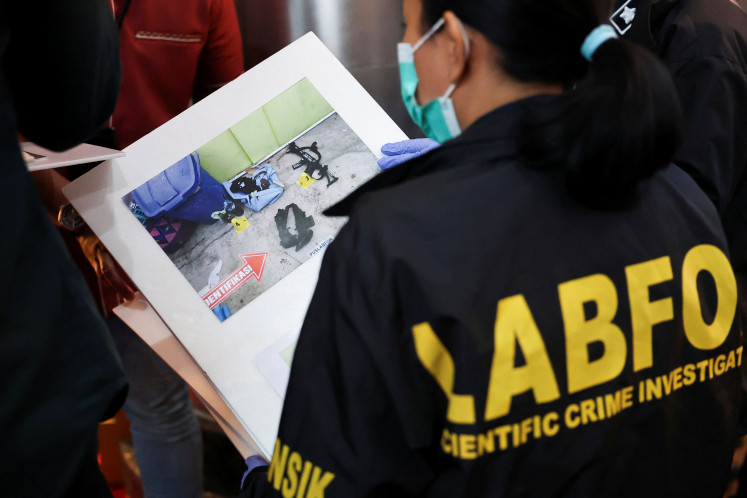Popular Reads
Top Results
Can't find what you're looking for?
View all search resultsPopular Reads
Top Results
Can't find what you're looking for?
View all search resultsNatural breathing space in superblock development
The areas of Jakarta, Bogor, Depok, Tangerang and Bekasi (Jabodetabek) are growing rapidly and commensurate with population growth
Change text size
Gift Premium Articles
to Anyone
T
he areas of Jakarta, Bogor, Depok, Tangerang and Bekasi (Jabodetabek) are growing rapidly and commensurate with population growth. In the past 25 years, as many as 25 “new towns” have developed in the western, eastern as well as southern axis of Jakarta.
Although they do not technically qualify as actual towns, these new towns consist of huge real estate developments with complementary recreational facilities, and as such are not independent or supporting the main city or able to reduce its load.
To spur development in the then Jabotabek (before the inclusion of Depok), the Public Works Ministry in 1983 initially set up its spatial layout plan, followed by a 1992 housing and residences law limiting Jakarta’s further development according to its maximum capacity and aims to reduce urbanization in the capital city.
The newly developed areas are home to life-style attractions, such as golf courses (emerging in the 1980s), industrial estates, hospitals, universities (from the 1990s), entertainment facilities, malls and convention and exhibition halls (from 2000 on).
Jakarta continues building new points of attraction, such as luxury malls, hotels, apartments as well as superblocks in the city’s strategic locations.
The city administration is striving to supervise and manage the rapid development, and working together with developers to arrange the spatial layout, build main infrastructure, public transportation and provide green spaces.
The city administration and developers must share these tasks professionally. The city is responsible for environmentally friendly public transportation, such as trains and TransJakarta buses, and construction of main streets, except highways, for accessibility.
But the development of the city must not sacrifice its assets; it must keep its population organized, maintain a healthy environment, unique culture and natural resources, and also be able to adapt to climate changes.
A city has to be balanced ecologically, economically and socially and it has to be pro-environment, oriented to both profit making and the welfare of its people, as well as balanced in its natural resources and various unique cultural aspects. The limited land available has encouraged developers to build integrated and environmentally friendly superblocks.
Superblocks are based on sustained development concepts with residents who are fully aware of how to save energy, water and reduce waste and pollution.
Most superblocks consist of apartments, a hotel, office building, a mall, education, entertainment facilities, houses of worship as well as open green areas. The development of superblocks must be in accordance with the 2007 law on city preparation for disaster situations, and law the same year on spatial layout, with a designation for a minimum 30 percent open green area, and the 2009 law on protection and management of strategic environment. The location of superblocks guarantees that they will not be used for new development.
Law No. 22/2009 on traffic regards the circulation and traffic system by prioritizing pedestrian areas and for bicycles (non-motorized transportation) and green transportation, such as trains and TransJakarta buses.
Here you will find enjoyable areas for walking and riding your bike under the shade of trees and connecting parks. This system of transportation reduces traffic congestion while information technology, such as teleworking, teleconference and teleshopping, will also reduce traffic.
According to Law No. 28/2002 on buildings, the green movement and energy conservation is realized by developing green buildings which means efficient use of land, saving water, energy, minimum waste and ensuring air quality, internally and externally.
Law No. 7/2004 on water resources states that people must use water wisely — to reduce, reuse, recycle, recovery and recharge (green water). The superblocks have eco-drainage systems that absorb as much water as possible, using rain water and clean water before the rest is channeled to rivers or the sea.
Tapping resources
Residents are requested to use only the necessary amount of water (reduce), to make use of recycled water (reuse), recycle, recharge water from land into absorption wells (recharge), and participate in preserving various natural water resources, such as man made lakes, dams, rivers and so on (recovery).
Water saving tips are also proving, such as closing faucets after use, or using faucets with automatic sensors, not to be wasteful when washing hands and dishes, choosing a dual flush toilet and consuming drinking water and not throwing away the remainder.
Law No. 18/2008 on Waste Management is targeted to at least reduce waste or enhancing the service quality of cleanliness, provision of equipment and facilities and collaboration among the residents in using various green technologies and decentralized management of waste as well as the possible production of handicrafts, compost and methane biogas.
Residents are taught to reduce, reuse and recycle products, and to refuse products that damage the environment and repair damaged items as far as possible.
Law No. 30/2007 on Energy and Government Regulation No. 70/2009 on Energy Conservation makes the building an energy saver. However, the lifestyle choices of residents to conserve energy and live in a hospitable environment contribute to the existence of such superblocks.
It is recommended that residents use energy saving products, switch off lights, computers and so on when not in use, and open windows and ventilation so that the rooms are fresh and bright and try to use alternative energy, such as the sun, biogas and wind.
In the midst of problematic city development that is exacerbating traffic congestion and flooding and the worsening of environmental quality, the presence of superblocks, which are integrated and environmentally friendly, is a true breath of fresh air.
The writer is a green property adviser and a specialist in architectural issues.


